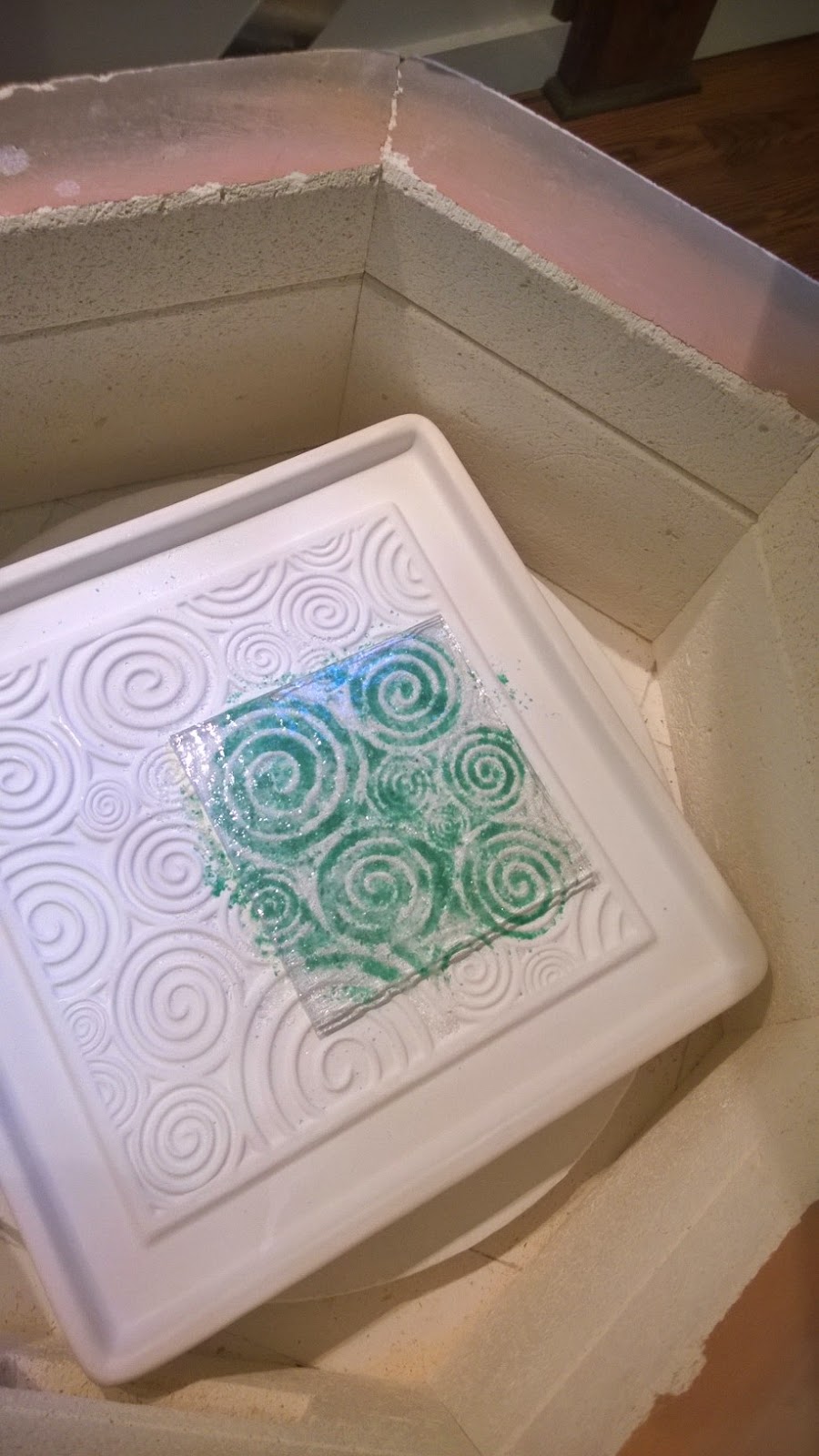Maybe I will post this question to Bullseye later but for now I will use the molds that are concave, that you melt into and try to make sure I have enuf glass.
This is my new spiral pattern fuser from Colour de Verre. I sprayed it with MR-97 and put two sheets of 3mm glass on top of it and fired it to the following schedule. The schedule is listed on the Colour de Verre web site and this is for a Top Element kiln. The posted schedule is for glass with a COE of 96. My glass has a COE of 90 so I haved increased casting temperature, which I am assuming are all the temperatures by about 20 degrees. :
100 dph,,,,,,,,,,,,..........................................320 degrees.............hold 30 mins.
150 dph..................................................1250 degrees...........hold 30 mins
150 dph..................................................1390 degrees...........hold 5 mins
Full..........................................................900 degrees............hold 60 mins
100 dph...................................................600 degrees............Off no venting
I am concerned that I am holding too long at 1250 degrees and going up so slowly to 1390, but the instructions say never to go fast with the mold because rushing it will cause thermal shock. So I am not going to do that.
The results. Some of the things that I learned is one, the glass fuses together so fully and so well at such a low temperature is because the firing schedule moves up so slowly. Additionally I used one square of blue transparent and one square of clear. I placed the clear square down on mold and blue transparent on top of it. This means that The pattern is in the clear part and the more vivid color in this case is the bottom of the piece. I could have made it the top of the piece if I slumped it the other way. Things to think about. The glass is out of the kiln. A few first thoughts. Edges are still pulling a bit. Perhaps next I will use slightly thicker glass.
Next time I am using 2 squares of clear glass and I filled the mold partly with a layer of clear frit topped with a layer of green frit. It was not easy to fill those concave parts of the mold with frit. This one will take more practice.
I am using this firing schedule with experiment two. The only real difference from myinstructions is that I am using the processing temperature or what I am considering the casting temperature of 1370, the lowest for glass which is COE 90. Tomorrow the results.
I slumped this with design side on the bottom. I prefer the design on the top, I also prefer the vivid color if I am using clear base on the top. Using the lowest casting temperature worked well.
My next project is on the botanical pattern fuser from Colour de Verre. I have filled a square patch of the patterns on the fuser with fine colored frit and over it I placed two pieces of 3mm white glass. I am running the following schedule which is the schedule I used on the others using the lowest possible processing temperature for COE 90 glass:
100dph...................300 degrees.......................hold 30 mins
150dph...................1250 degrees.....................hold 30 mins
150dph...................1370 degrees.....................hold 5 mins
Full..........................900 degrees......................hold 1 hour
100dph....................700 degrees.......................Off
Botanical Pattern Fuser
I have learned something, that is, when I go back to using the other molds from a different company I will do things differently. First those molds are not as heavy or substantial as the Colour de Verre or the designs are not as deep, so in choosing a firing schedule I will fire their suggested schedule with an eye for going as slow as possible. This will insure that the two pieces of glass fuse together which is what I want. I also can accomplish their fusing together by prefusing them before using the mold. And maybe I should try to buy some irid glass along with more Boron 97
I also learned that I do not like it as much when I fill the crevices on the texture mold with frit. I like it more when the textures are put directly into the glass. At the store I bought some Iridized glass, some champagne tint and some slate grey, all colors I will use in this current project. I want to test some color combinations next then clean all the molds, clean the shelf, and get everything ready to go. Ralph at the store says I can make some larger and I will give that a try.





No comments:
Post a Comment